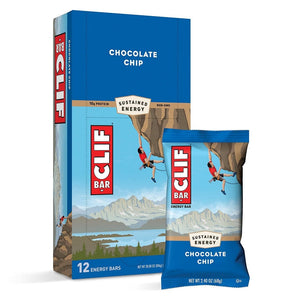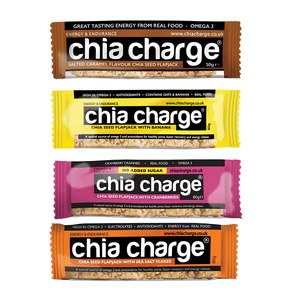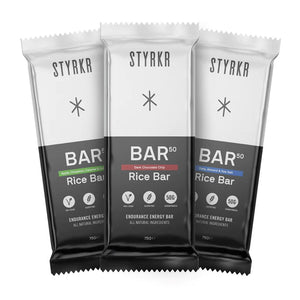It’s your choice - with our knowledge.

Energy Bars: How & When You Should Use Them
Energy bars are a popular and convenient way for endurance athletes to fuel their training and competition. They are typically made with a combination of carbohydrates, protein, and fat, and they can provide a quick and sustained source of energy.
A compact and tasty source of carbohydrates perfect for before, during, and after exercise. Often made from easy to digest, natural ingredients they are an ideal way to add carbs, protein, and fat to your fuelling strategy if you don’t get on with energy gels or energy chews.
With so many options on the market we doubt you will struggle to find one you love.
You can also use our Nutrition Calculator to work out how many you may need for a sporting event.
When to use them?
Energy bars can be used at a variety of times throughout your training and competition. Some common times to use energy bars include:
- Before a workout: Eating an energy bar about 30-60 minutes before a workout can help to top off your glycogen stores and give you a boost of energy.
- During a workout: Energy bars can be eaten during a workout to provide a sustained source of energy. This is especially important for long workouts or workouts that involve high-intensity activity.
- After a workout: Eating an energy bar after a workout can help to replenish your glycogen stores and promote muscle recovery.
A staple energy source for cyclists and triathletes and a favorite for climbers, hikers, before the gym or even just for a quick energy boost on a long workday.
Energy bars can be also be a great way to fuel your body during a long distance running event. They are easy to digest and provide a sustained source of energy. When choosing energy bars for a long distance running event, it is important to consider the following factors:
Here are a few energy bars that are well-suited for long distance running events:
- Clif Bar: The original Clif Bars are a popular choice for athletes because they are high in carbohydrates and protein, and they are relatively easy to digest.
- Chia Energy Flapjack: A balanced recipe enables a fast energy boost to be backed up with slower burn carbs.
- Styrkr Bar50: Contains a huge 50g of carbohydrates but is available in three delicious, vegan flavours. Find out more behind the BAR50: The High-Energy Snack from Styrkr.
- Maurten Solid 160: An oat and rice-based chewable bar, with 40 grams of carbohydrates split into equal 20-gram servings for optimized fuelling.
If you need more help choosing the right energy bar for you check out our article How to choose an energy bar.
How to use energy bars
The majority of Energy Bars have a higher carbohydrate content to a single gel or chew serving at 30-50 grams, remember you ideally want to take on somewhere between 50-80 grams of carbs every hour.
Incorporating an energy bar into your race fuel strategy could be a game changer.
It is important to test out different energy bars in training to see which ones work best for you. Here are some tips for using energy bars effectively during a long distance running event:
- Eat an energy bar about 30-60 minutes before the start of the race to top off your glycogen stores and give you a boost of energy.
- Eat one energy bar every 45-60 minutes during the race to maintain your energy levels.
- Energy bars can be eaten as is or they or broken up into bite size chunks. If you are eating an energy bar during a workout.
- It's important to drink plenty of fluids to avoid dehydration.
Here are a few tips for using energy bars effectively:
- Experiment with different brands and flavors: There are many different brands and flavors of energy bars available, so it is important to experiment to find the ones that you like best and that work well for your body.
- Start small: If you are new to using energy bars, start by eating a small amount and see how it feels. You can gradually increase the amount you eat as needed.
- Listen to your body: If you feel stomach upset or other negative side effects after eating an energy bar, stop eating it.
Energy bars can be a valuable tool for endurance athletes to fuel their training and competition. By choosing the right energy bars and eating them at the right times, endurance athletes can improve their performance and reach their goals.
It’s your choice - with our knowledge.

















































































































